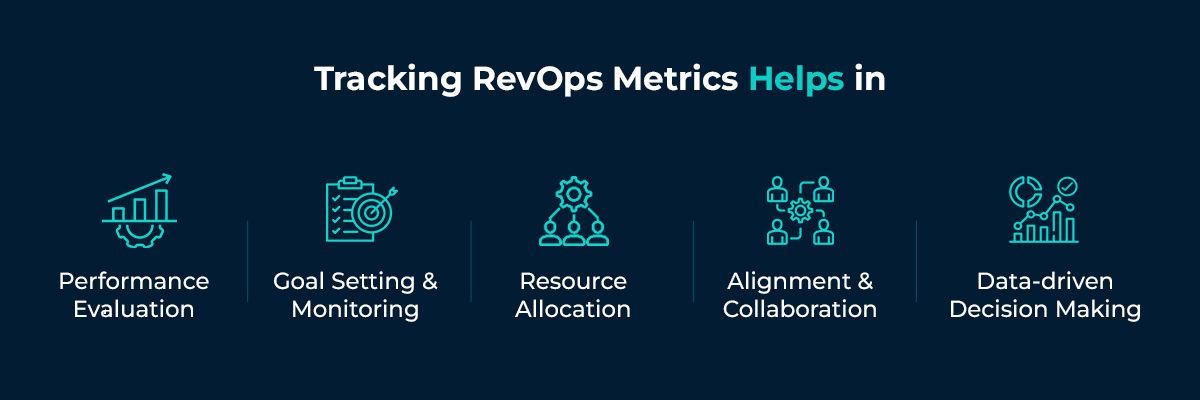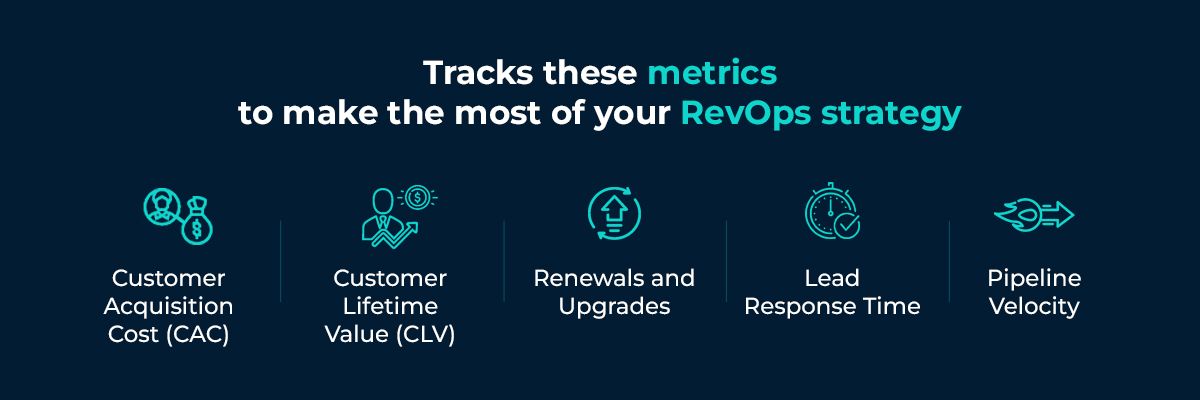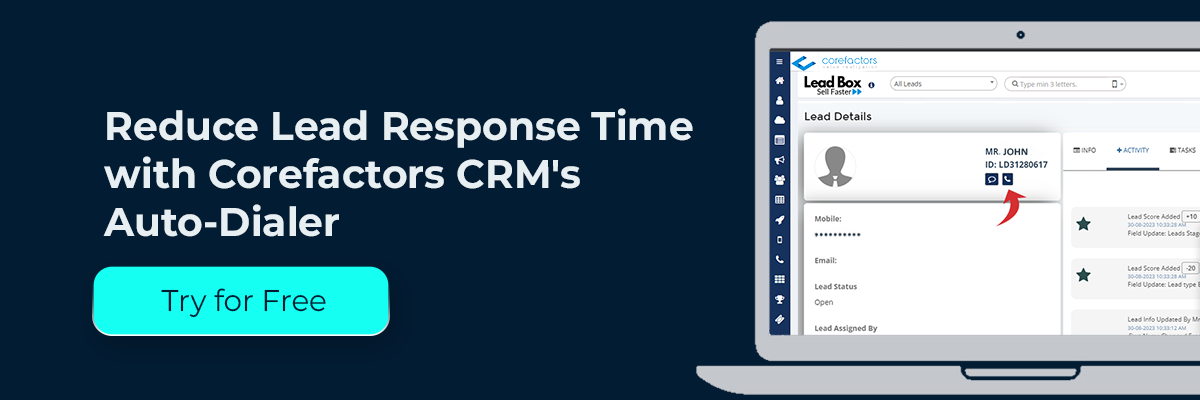In the not-so-distant past, businesses operated in a world where bookkeeping and monitoring data were the trusted tools of the trade. It was an era where annual reports served as decision-makers for performance evaluation.
However, as the digital tsunami swept over the business landscape, a realization dawned, relying solely on traditional methods was akin to navigating uncharted waters without a compass.
The internet empowered consumers. They were no longer dependent on businesses to spoon-feed them information, instead, they took the reins, making informed decisions before purchasing.
Amidst this transformation, businesses recognized the need for alignment. It wasn't just about bringing in new customers; it was about retaining them in a landscape of innumerable options.
This realization birthed the concept of Revenue Operations, or RevOps.
What is RevOps?
Revenue Operations (RevOps) was a strategic response to the changing tides, acknowledging that different departments, armed with various tools, were working in silos. It aims to foster alignment among the revenue-generating teams of your business.
RevOps optimizes good practices for revenue generation by breaking silos between the sales, marketing, customer support, and success teams.
RevOps metrics measure the effectiveness of the implemented strategy and the performance of involved teams. But, why do we need these metrics in the first place?
Why are RevOps Metrics Important?
Data does not lie. But different data tell different stories.
Company A tracks the operation and monitors the progress of its business by compartmentalizing departments and assigning them their respective metrics. The sales team report has nothing to do with the performance of the marketing or customer support team.
Company B recognizes that the efforts of all teams contribute to a common objective, and therefore, they do not compartmentalize their performance tracking reports. The contribution of a marketing campaign in generating leads and thus leading to more sales is also documented.
For example, in the case of Company A, the sales report shows an increase in the number of customers, which is a positive. However, the customer support and success report shows that the number of subscription renewals has gone down.
Looking at these two reports separately will not allow you to get the complete picture. The increase in the number of customers signifies new signups but it does not reflect the fact that you are losing current customers.
Company B reports would connect these dots easily.
What is the difference between the two? While Company A follows a traditional approach, Company B has implemented or started with the fundamentals of RevOps. They have aligned their teams and track their progress as one.
The success and effectiveness of a business can be defined through Key Performance Indicators (KPIs) or metrics that all teams can use.
RevOps metrics are dynamic, responsive, and, most importantly, real-time. They go beyond the static confines of an annual report, providing a live pulse of your organization's health.
A list of five important RevOps metrics to measure business growth is discussed later on in this blog.

- Performance Evaluation
RevOps metrics act as the stethoscope, allowing you to gauge the health of your sales, marketing, and customer success efforts with precision. For example, you can track conversion rates at different stages of your sales funnel, helping you pinpoint where leads are dropping off or where bottlenecks occur.
Revops metrics for sales and marketing success help gauge the alignment between these teams and overall business productivity. This results in customer experience enhancement.
2. Goal Setting and Monitoring
Consider RevOps metrics as checkpoints along the journey to ensure that your business is growing in the right direction. These KPIs will help you come up with goals that are SMART.
Specific
Measurable
Achievable
Relevant
Time-bound
You can track your and your team’s progress toward these goals in real time rather than wait for an annual review. A thorough analysis of these metrics will help you identify early signs of deviation and take corrective action.
Effective monitoring allows recognition of the bottlenecks as and when they arise, this helps set better goals. Analyzing the RevOps metrics allows leaders to learn, improve, and train their teams accordingly.
3. Resource Allocation
A growing business is always looking for ways to ensure its resources - budget, time, and personnel, are deployed strategically.
RevOps metrics help you identify areas of resource inefficiency by calculating the return on investment (ROI) of different activities.
Customer success metrics provide data to back up your budget allocation plans. By demonstrating the quantitative and qualitative impact of a particular initiative and department, resource allocation strategies become more straightforward.
4. Alignment and Collaboration
These metrics can serve as a common reference point for teams. With everyone tracking the same metrics, it becomes easier to understand how each team's efforts contribute to working towards the business objectives.
Metrics promote transparency within the organization. When teams have access to each other's performance data, they can provide valuable input and support for improvement. This practice also helps align incentives across departments.
5. Data-driven Decision Making
Working with RevOps metrics to measure business growth reduces reliance on intuition or gut feelings. A/B testing and experimentation help compare the performance of different strategies and then decide on which works best for your business needs.
Moreover, integrating chatgpt coding can streamline the aggregation and analysis of data, enhancing real-time decision-making processes. Relying on data to drive decisions fosters a culture of transparency, accountability, and continuous improvement.
Important RevOps Metrics to Track
Let’s learn more about these metrics and what they help measure.

- Customer Acquisition Cost (CAC)
CAC measures the cost of acquiring a new customer.
It reflects the amount of money spent on obtaining a brand-new customer or converting a prospect into a customer.
This metric helps you understand how cash-efficient your business is. It is calculated as
The cost associated with acquiring new customers
---------------------------------------------------------------
Total number of new customers acquired
The cost associated with acquiring new customers is not limited to sales activities. This metric, from a RevOps perspective also takes the cost of interdepartmental dependencies into account.
Maybe a guest post or a backlink got quality leads. This lead was then successfully converted. The cost that went into creating the guest post of backlink will also be considered.
2. Customer Lifetime Value (CLV)
CLV represents the total income you can expect to bring in from a certain customer throughout their entire relationship with your business.
Breaking down the CLV by quartiles or some other form of segmentation can provide greater insights into what works for your business.
You can compare CLV against CAC to estimate a customer’s profitability.
CLV = Average Purchase Value X Average Purchase Frequency X Average Customer Lifespan
3. Renewals and Upgrades
Renewals indicate how successful your business is at retaining customers. Monitoring renewal rates will help you understand customer satisfaction levels and identify areas of improvement in customer experience and service.
Upgrades represent opportunities to increase the value of your existing customer accounts.
Track upgrade rates to focus on strategies to upsell and cross-sell to current customers, thereby increasing revenue without acquiring new clients.
The rate of repeat purchases and subscription renewals not only reflects the efforts of the sales team but also considers the effort that went into retaining the customer by the marketing and customer support teams.
You can also read our complete guide on Customer Retention Practices.
4. Lead Response Time
This metric measures the time it takes for your sales rep to follow up with an inbound or outbound lead. It is the time that lapses between lead creation and the first response.
The faster you respond the better your chances with the customer. A study shows that conversion rates are eight times higher if you respond within the first five minutes.
The time you take to reach out to your prospects can make or break the deal.
Lead response time is calculated as
The sum of time taken for the first response to leads
--------------------------------------------------------------- Number of leads

5. Pipeline Velocity
Pipeline Velocity measures the speed at which deals move through your sales pipeline. Tracking this metric can help you measure the effectiveness of
- Measures in place to increase the number of qualified leads
- Strategies to move deals along the pipeline and close them quickly
The pipeline velocity is calculated as follows:
The total value of deals closed
-------------------------------------
Average time taken to close a deal
This metric is best used to measure bottlenecks in the sales pipeline and gauge the overall efficiency of the sales team.
A low value means that your conversion process needs more work. Ensure your sales pipeline has fewer barriers, thus converting your leads faster and increasing the velocity.
Key Takeaways
This blog only covers 5 of the important RevOps metrics. The list does not end here, we will cover more such KPIs in upcoming blog posts.
Metrics are not just numbers on a dashboard; they are the lifeblood of revenue operations. They empower you to evaluate performance, set and monitor goals, allocate resources effectively, foster alignment and collaboration, and make informed, data-driven decisions that propel your organization toward success.
The process of becoming a revenue-generating powerhouse is much smoother and organized when these metrics are closely monitored. Which among the five discussed here do you track?







